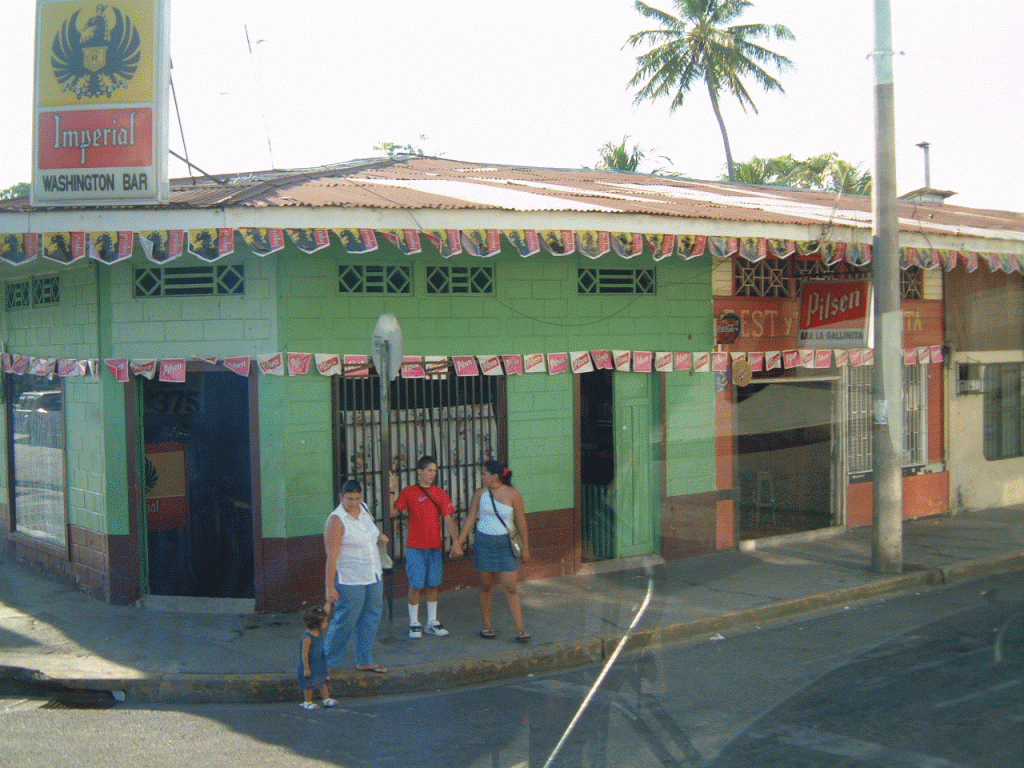BY JANET STEINBERG
esta?” (how are you?) is the friendly greeting of Costa
Ricans when you arrive in their tiny country of approximately 4-million people.
Don’t reply: “Fine”. Just say: “Pura
vida!” More than any other two words in a Costa Rican’s
vocabulary, Pura vida (Life is good) reflects
their upbeat attitude.
Being the cruise-aholic that I am, I choose to visit Costa Rica by ship. After transiting
the Panama Canal, and spending a full day at sea, I disembarked in
Puntarenas, Costa Rica. Puntarenas, meaning ‘Sandy Point”, is
the West Coast port of call that serves as the gateway to
the country.
ships offer their passengers a myriad of shore excursions that allow you
to explore this verdant Central American
country. Those who wanted to keep their feet on the ground
could choose from a visit to a coffee plantation, the Cloud Forest and
Poas National Park, or La Paz Waterfall Gardens.
The more adventurous, who like their head in the clouds (or as close
as you can get without flying), can choose the tropical forest
Skywalk, a series of suspended bridges that form a path through
the tree tops. Or they can select a Canopy Tour that
is, as far as I am concerned, flying without a plane.
Originally developed to allow scientists to study the biodiversity
found in the canopy of trees, Canopy evolved into a popular
sport. Where scientists relied on rigging large trees with
climbing gear, cables, and ladders, Canopy Centers now provide harnesses
hooked to cables for the brave souls wishing to partake.
From platforms located over 100-feet high and up to 150-feet apart,
you pump out the adrenaline and swing through the air from one
gigantic tree to another. Although Costa Rica is the leading
country in abundance and safety of Canopy Tours, being
a 21st century Tarzan was not my idea of fun.
day in Costa Rica, I had just one question: “Do you know the way to
San Jose?” And of course my ship’s shore
excursion program did. Leaving Puntarenas via roads lined
with golden shower trees (cassia fistula), we entered onto the Pan
American Highway.
 |
| GOLDEN SHOWER TREE |
two and a half-hour journey to the capital city of San Jose took
us through four of the republic’s seven provinces. We journeyed
past vast coastal flood plains, up high mountains, and into the
Central Volcanic Valley. There are 9 active volcanoes and 95
inactive volcanoes in the country.
Enroute, our Tica (native born Costa
Rican female) guide Lorna held up a shiny orange growth,
the size of a large pepper with a shell the size of a golf ball
at the bottom of it. When no one could name what it was Lorna
said it was a cashew. She went on to explain that
there is only one cashew nut (maranon) per cashew. It
takes the entire harvest of two trees to obtain one pound of cashew
nuts. That is why they are so costly.
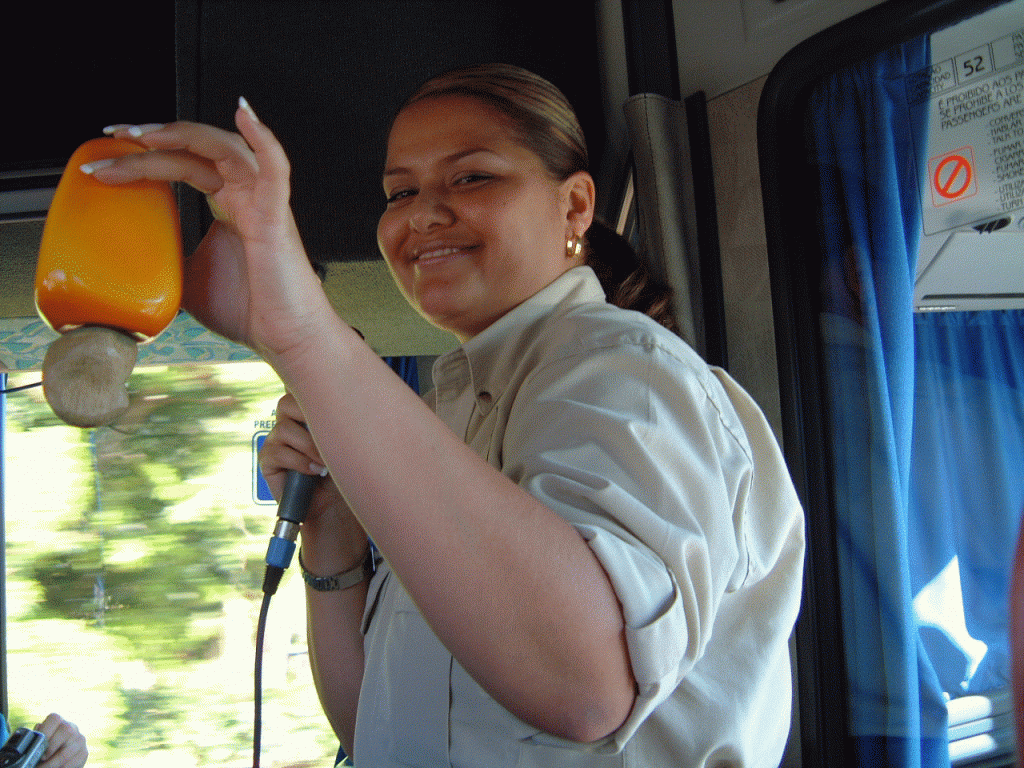 |
| LORNA DISPLAYS CASHEW NUT |
gave us a crash course in buying Costa Rican coffee. “Don’t buy
coffee in beautiful boxes,” she said. “Buy coffee
protected by foil bags that you can put in the
freezer. When frozen, the whole bean will last for one
year, the ground coffee will last for six months. The
three best brands of Costa Rican coffee are Britt, Rey, and Volio.”
If you want to purchase the local “moonshine”, or “white
lightening” known as guaro, Lorna recommends the brand
name Cacique. Costa Rica’s national drink, it is made from
sugar cane.
Our first stop in San Jose was at the Teatro Nacional (National
Theater), also referred to as the Opera House. Opened in 1897,
the theater bears a strong resemblance to the Paris Opera House.
Approaching this sandstone architectural gem, located on the
Plaza de la Cultura, we were confronted with marble statues of Beethoven
and the 17th century Spanish playwright Calderon de
la Barca. The 1997 bronze sculpture “Flautista” plays his
flute in the courtyard, totally unaware that the golden arches of
McDonalds serve as his backdrop.
 |
| “FLAUTISTA”, BACKDROPPED BY McDONALDS’ ARCHES, IN NATIONAL THEATER COURTYARD |
baroque interior of the National Theater is an awesome
experience. Chandeliers hang from frescoed
ceilings, marble statues are surrounded by gilded furniture, and a
red velvet valance drapes the presidential box. The
second floor Intermission Hall is palatial and the severe damage
it suffered in the 1991 earthquake has been repaired.
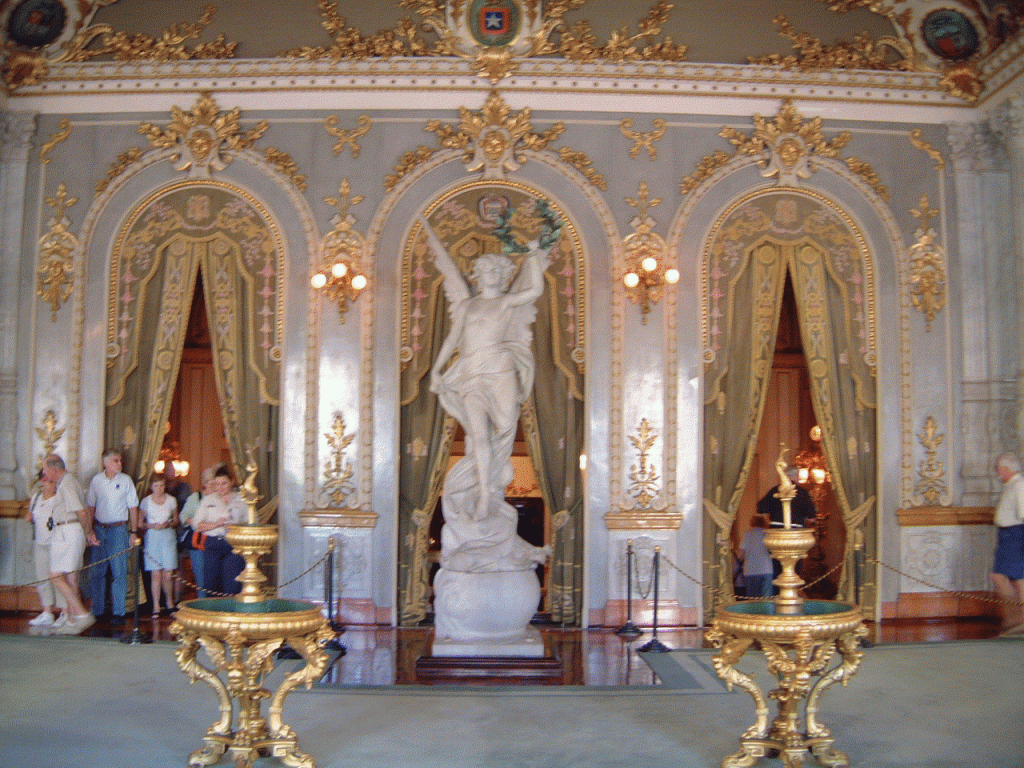 |
| BAROQUE INTERIOR OF THE NATIONAL THEATER |
stop was at the Museo Nacional (National Museum) a
showcase of Costa Rican history. Housed in what was once
the Buena Vista Fort, the museum displays pottery dating back to
500BC. There is also an extensive exhibit of “Flying
Panel” metates, a stunning manifestation of Pre-Columbian
art. Dating from 0-500 AD, they are made from volcanic
stone. The courtyard of the museum, stunningly landscaped and
enhanced with the pre-Hispanic boulders found only in Costa Rica,
offers a superb view of San Jose. Little wonder that the
original fort was named Buena Vista (good view).
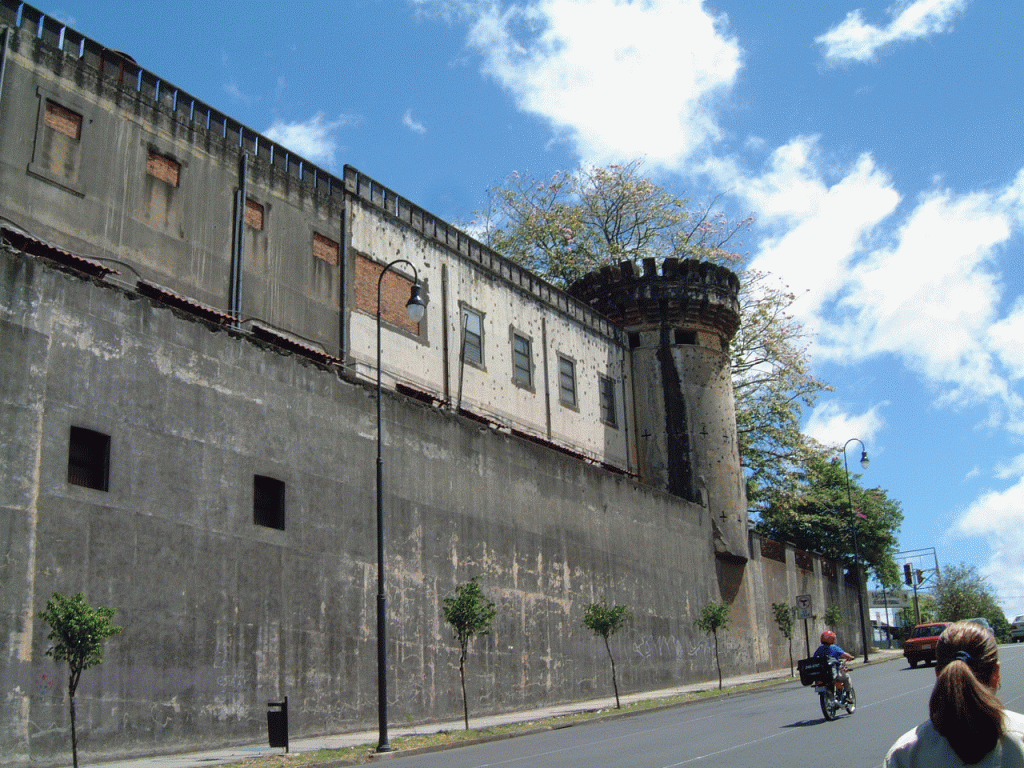 |
| NATIONAL MUSEUM IS HOUSED IN THE FORMER BUENA VISTA FORT |
lunched at Le Chandelier, one of the country’s finest restaurants. Formerly
a private mansion, on Calle Yoses in the upscale suburb
of San Pedro, the restaurant has a private room reserved for Costa
Rica’s president, and a restroom with a planted black bathtub that remains
from its mansion days.
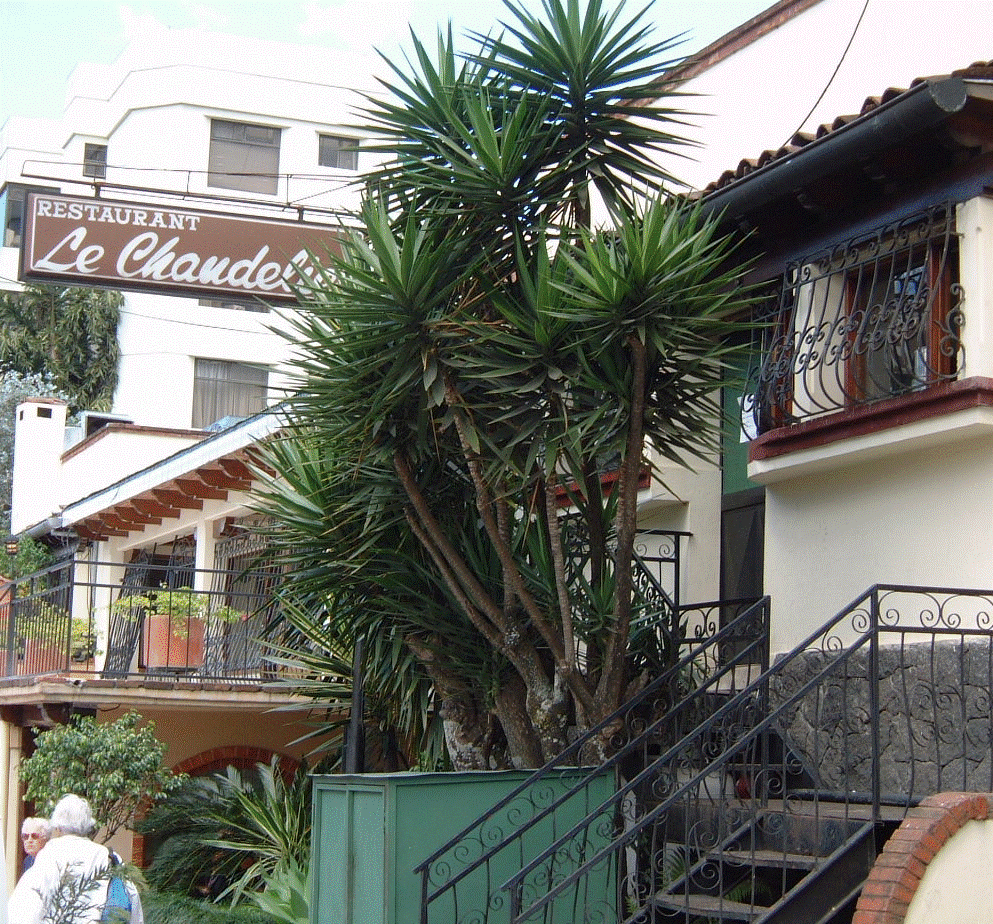 |
| LE CHANDELIER RESTAURANT |
to Puntarenas, we made a shop-stop at the Chaverri Oxcart
Factory in the artisan town of Sarchi. Though it is a typical
tourist shop, it is also an encounter with Costa Rica’s tradition and
history. Since 1903, the Chaverri Oxcart Factory
has been using the original methods of making authentic Costa
Rican oxcarts.
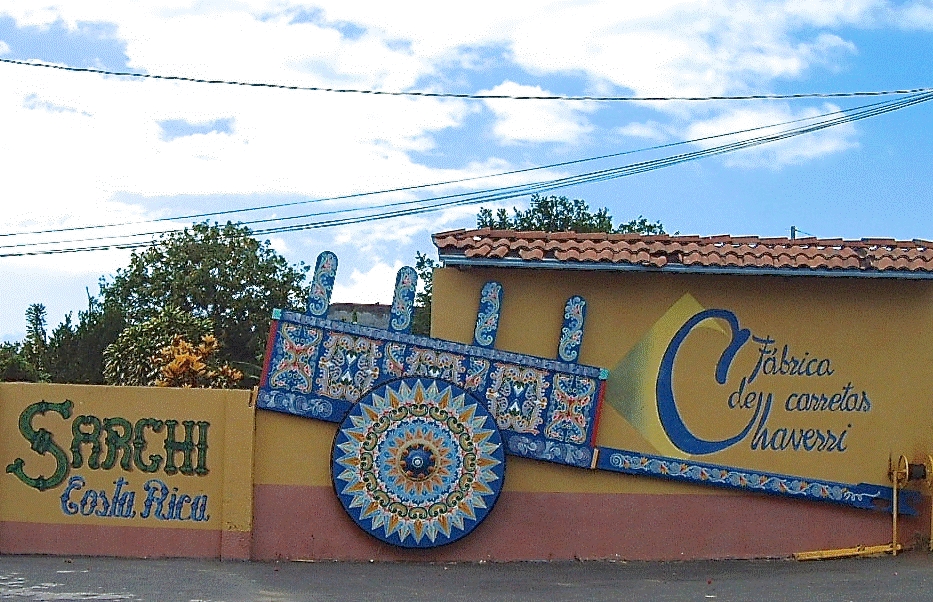 |
|
CHAVERRI
OXCART FACTORY |
to transport products to the markets and harbors, villagers were able
to identify an oxcart bysound alone. Each wagon’s resonant
knock was as distinctive as the voice of the
owner. These traditional hand-painted carts are now
used to adorn patios, serve as bar carts, or just remind you of
a special visit to Costa Rica. At the Oxcart factory, you can
also stock up on Costa Rican coffee and molas, the layered
cloth sculptures used to adorn clothing. JANET STEINBERG is an award-winning Travel Writer,
International Travel Consultant, and
winner of 40 national Travel Writing Awards.

